Introduction to Email Click-Through Rates

What is Email Click-Through Rate (CTR)
Email Click-Through Rate (CTR) measures the percentage of email recipients who click on one or more links contained in an email. It's a crucial metric for evaluating the effectiveness of email marketing campaigns, indicating how well your content engages and drives action among your audience.
Why You Should Measure CTR of Your Email Marketing Campaigns
Measuring the Click-Through Rate (CTR) of your email marketing campaigns is critical for optimizing your marketing efforts and achieving tangible results. A focus on CTR not only reveals the effectiveness of your emails in engaging recipients but also offers insights for strategic improvement.
Key Reasons to Measure CTR
Performance Benchmarking
CTR serves as a benchmark to gauge the health of your email campaigns.
For instance, the average click-through rate across industries is around 2.5%. Comparing your campaigns against industry standards can help identify areas for improvement.
Content Optimization
Identify what resonates: Higher CTR indicates content that resonates with your target audience, guiding you to produce more of what works.
Refine your approach: Use CTR data to experiment with different email elements (e.g., subject lines, email copy, and CTAs) and continuously refine your strategy.
Strategic Advantages of CTR Measurement
Engagement Indicator: By monitoring CTR, you can tailor content to increase engagement. Personalized emails, for instance, are shown to increase click rates by up to 14%.
Improve Deliverability: High engagement rates, as evidenced by strong CTRs, signal to email service providers that your content is valuable, enhancing your sender reputation and email deliverability.
ROI Measurement: CTR directly impacts the return on investment (ROI) of your email campaigns. Understanding which campaigns drive the most clicks can help allocate resources more efficiently, focusing on high-performing strategies.
Audience Insights:
- Segmentation: CTR analysis helps in identifying highly engaged segments of your audience, allowing for more targeted and effective email marketing strategies.
- Behavioral Trends: Analyzing changes in CTR over time can reveal trends in audience behavior, helping to adapt strategies to evolving preferences.
What Is Considered a Good Email Click-Through Rate
A good email Click-Through Rate (CTR)depends on various factors including industry, audience, and the type of email sent. However, understanding the benchmarks can provide a solid foundation for evaluating your email marketing campaigns' performance.
Industry Benchmarks
On average, a good email CTR ranges between 2% and 5%. However, this can vary significantly across different sectors:
- Retail: Averages around 3.0%, given the high volume of promotional emails.
- Nonprofit: Can see higher rates, around 4.5%, due to the engaged nature of their audience bases.
- B2B: Often averages slightly lower, around 2.5%, due to the more informational or transactional nature of the content.
Factors Influencing CTR
Subject Lines: Clear, compelling subject lines can significantly impact open rates, thereby affecting CTR. Personalized subject lines are known to increase open rates by up to 50%.
Email Content: Relevance and value of the content to the recipient drive engagement. Emails that cater to the interests or needs of the audience tend to have higher CTRs.
Call to Action (CTA): Well-placed, clear CTAs can improve CTR. Emails with a single CTA have been shown to increase clicks by 371%.
How to Calculate Email CTR
Calculating Email Click-Through Rate (CTR) is for assessing the effectiveness of your email marketing campaigns. This metric provides a clear indication of how engaging your email content is to your audience by showing the percentage of recipients who clicked on a link within the email.
The Formula:
To calculate CTR, use the following formula:
CTR=(Number of Clicks/Number of Emails Delivered) x 100
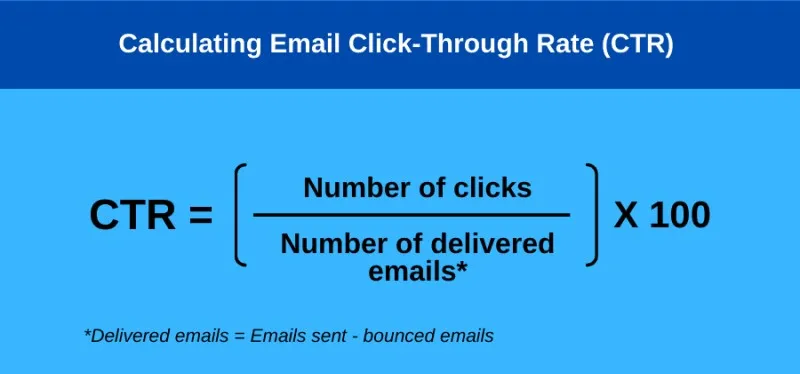
Steps for Calculation:
- Count the Clicks: Start by determining the total number of clicks on all the links contained in your email.
- Determine Emails Delivered: Subtract any bounces from the total number of emails sent to find out how many emails were successfully delivered.
- Apply the Formula: Divide the total number of clicks by the number of emails delivered, then multiply by 100 to convert the figure into a percentage.
How to Measure Email CTR Effectively
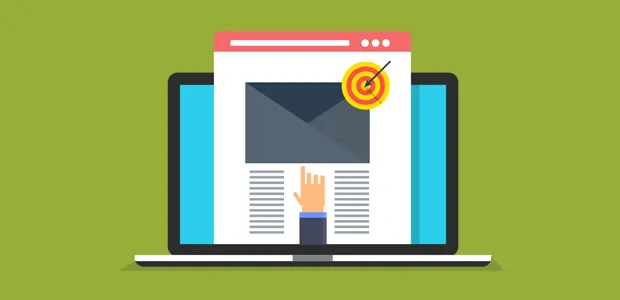
A well-measured CTR can offer insights into the relevance and appeal of your emails, guiding you in optimizing future campaigns for better performance.
CTR is important because it indicates the level of interest and engagement your content generates and helps identify which parts of your email strategy work well and what needs improvement.
Steps to Measure Email CTR Effectively:
1. Gather Your Data:
- Use email marketing tools that track the number of emails delivered, the number of unique clicks, and then calculate the CTR for you. This is your starting point for analysis.
2. Clarify What Counts:
- Unique Clicks vs. Total Clicks: Focus on unique clicks to ensure accuracy, as total clicks may include multiple clicks by the same user.
- Delivered Emails: Only consider emails that have successfully reached the recipients' inboxes, excluding bounced emails.
3. Deep Dive Into Segmentation:
- Segment your CTR analysis by audience demographics, behavior, and campaign type. For example, promotional emails might have different CTRs compared to informational newsletters.
- Benchmarking: Compare your CTRs against industry averages. This comparison can help set realistic targets. For instance, the average CTR across all industries might hover around 2-3%, but this can vary widely.
12 Best Ways to Improve Email Click-Through Rate
1. Personalize Your Emails
Understanding Personalization: Personalization goes beyond just inserting a recipient's name into an email. It involves tailoring the content to meet the interests, needs, and behaviors of each individual subscriber.
- Data-Driven Personalization: Utilize data collected from subscribers' interactions with your website, past purchases, and email engagement to create highly targeted content.
- Segmentation: Break your email list into smaller segments based on common characteristics or behaviors. Tailored messages to these segments significantly increase relevance and engagement.
Why It Works:
Increased Relevance: Personalized emails are more relevant to the recipient, making them more likely to be opened and clicked. Campaign Monitor reports that emails with personalized subject lines are 26% more likely to be opened.
Enhanced Engagement: Personalization fosters a sense of connection and recognition, leading to higher engagement rates.

2. Craft Compelling Subject Lines
The subject line is your first (and often only) opportunity to grab your audience's attention. It should be engaging, clear, and reflective of the email's content.
- Clarity and Curiosity: A good subject line strikes a balance between being informative and intriguing, prompting the recipient to open the email.
- Use of Power Words and Emojis: Incorporating power words that evoke emotion or action can make your subject lines stand out. Emojis, when used sparingly, can also attract attention in a crowded inbox.
Why It Works:
Immediate Impact: Subject lines directly influence open rates, which is a precursor to improving CTR. According to Invesp, 47% of email recipients open an email based on the subject line alone.
Test and Optimize: Continuously testing different subject lines (A/B testing) helps identify what resonates best with your audience, allowing for ongoing optimization and improvement in CTR.

3. Segment Your Audience

Tailoring Your Approach: Audience segmentation involves dividing your email list into smaller, more defined groups based on specific criteria such as demographics, behavior, or purchase history.
- Behavioral Segmentation: Segmenting based on past interactions with your website or email campaigns allows you to tailor content that matches their interest level and engagement patterns.
- Demographic Segmentation: This can include age, location, or job role, enabling you to customize your messaging to better suit the recipient's context.
Why It Works:
Increased Relevance: Segmented campaigns ensure that the content is highly relevant to each group, improving engagement and CTR. Mailchimp's research shows that segmented campaigns can lead to a 100% increase in clicks compared to non-segmented campaigns.
Better Personalization: Segmentation is a stepping stone to deeper personalization, making your emails feel more personal and less like a broad blast to your entire list.
4. Use Clear and Strong CTAs
Commanding Action: A Call to Action (CTA) is a crucial component of your email that tells the reader exactly what action you want them to take, whether it’s visiting a webpage, making a purchase, or signing up for more information.
- Visibility and Clarity: Your CTA should stand out visually and be immediately understandable. Consider using buttons with contrasting colors and action-oriented text.
- Strategic Placement: Place your CTAs where they naturally draw the reader's attention, such as above the fold and within the email's body where relevant.
Why It Works:
Directs the Reader: A clear and compelling CTA guides readers on what to do next, removing any guesswork and significantly improving the likelihood of a click-through.
Increases Conversion Rates: Not only does a strong CTA improve CTR, but it also positively impacts conversion rates. According to WordStream, emails with a single CTA can increase clicks by 371% and sales by 1617%.

5. Optimize Email Design
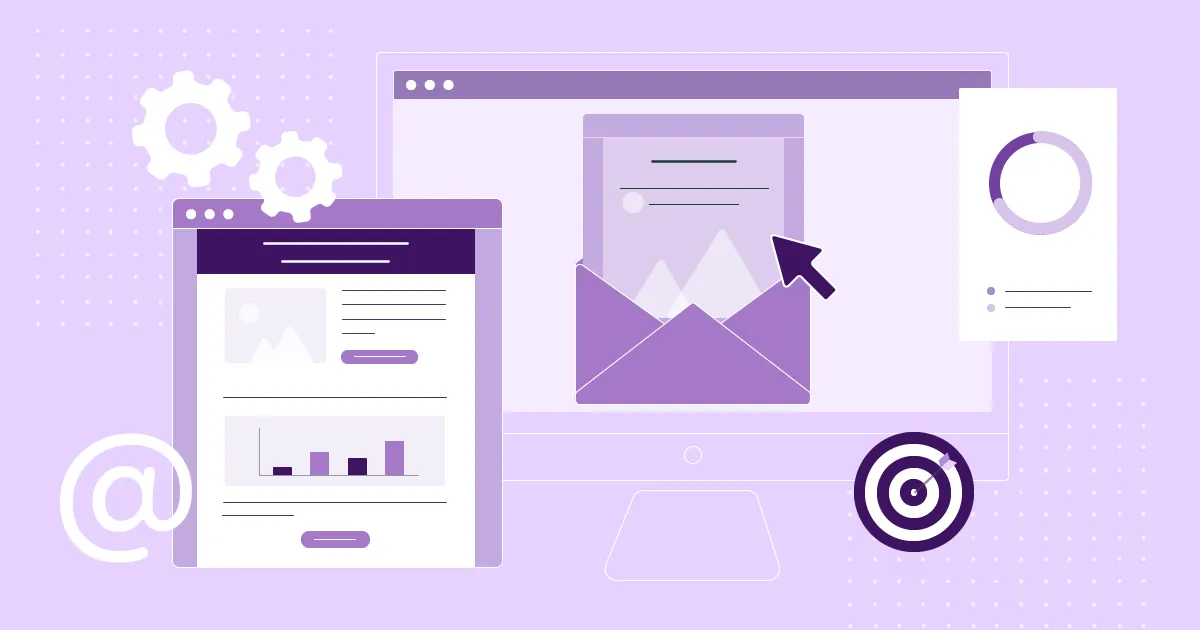
Crafting Visually Appealing Emails: An optimized email design is crucial for making a good first impression and ensuring your message is effectively communicated.
- Responsive Design: With over half of all emails opened on mobile devices, it’s essential that your emails are responsive and look great across all devices and screen sizes.
- Visual Hierarchy: Use design elements to guide the reader's eye towards key information and your CTA. This includes leveraging white space, font size, and color contrasts effectively.
Why It Works:
Improves Readability: A well-designed email enhances readability, making it easier for subscribers to absorb your message and take action. Litmus reports that 72% of people will delete an email if it doesn’t display correctly on their mobile device, highlighting the importance of responsive design.
Boosts Engagement: A visually appealing email can capture attention and keep readers engaged, leading to higher CTRs. Consistent branding within your emails also helps build trust and recognition.
6. Add Social Proof
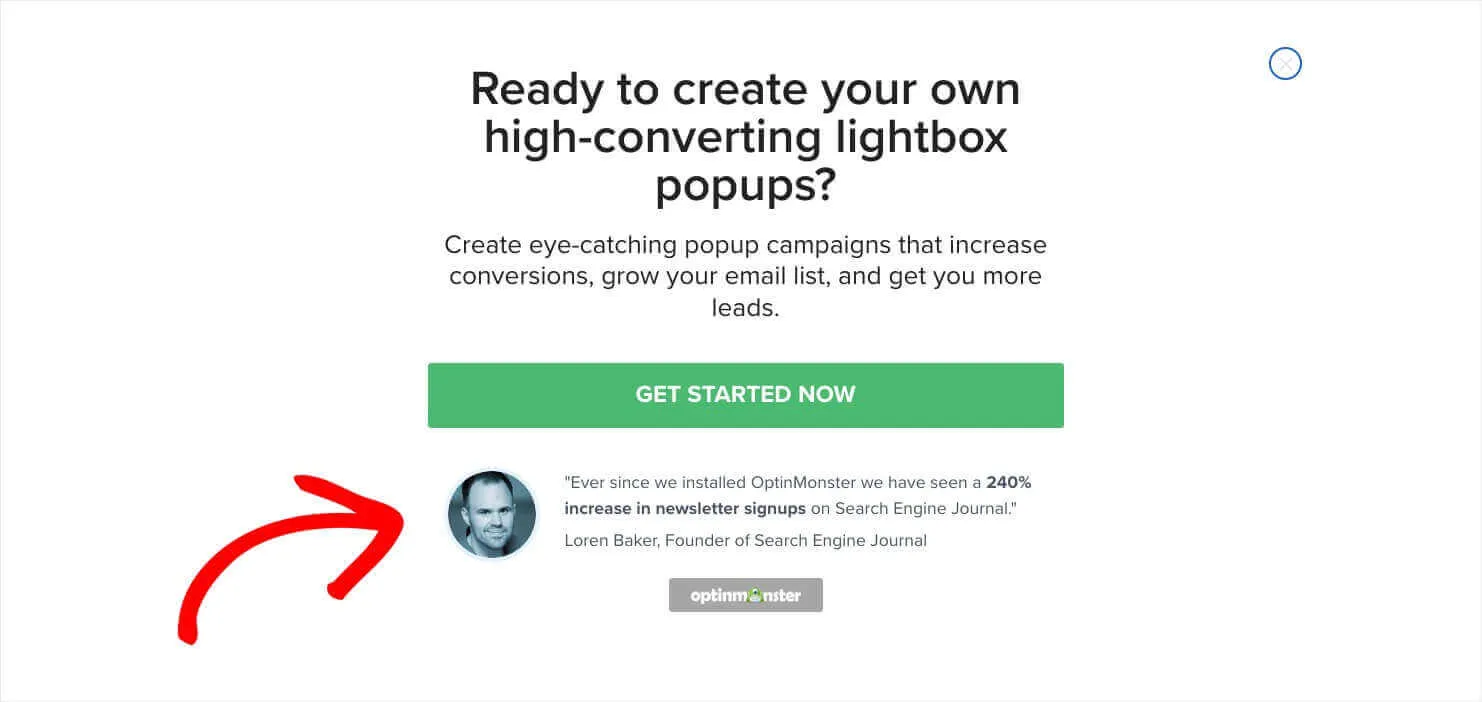
Building Trust through Endorsement: Social proof, such as testimonials, customer reviews, or user-generated content, leverages the influence of others to build trust and credibility with your audience.
- Incorporate Testimonials: Highlighting customer testimonials within your emails can provide real-world endorsements of your products or services.
- Showcase Achievements: Mentioning awards, certifications, or social media milestones can also serve as powerful forms of social proof.
Why It Works:
Enhances Credibility: Seeing positive feedback from other customers can significantly influence potential buyers by validating your offer’s value and reliability.
Increases Engagement: Emails featuring social proof tend to engage readers more, as they present relatable stories and outcomes, encouraging clicks. According to Nielsen, 92% of people trust recommendations from peers, underscoring the impact of social proof on consumer behavior.
7. Create Scarcity and Urgency
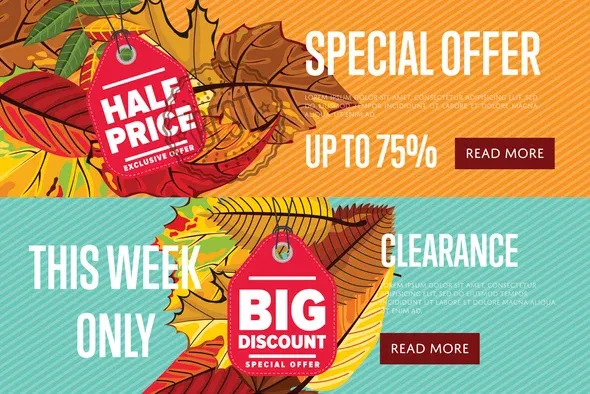
Motivating Immediate Action: Scarcity and urgency are potent motivators that can prompt subscribers to act quickly, fearing they might miss out on a valuable offer.
- Limited-Time Offers: Highlighting that a deal is available for a limited time encourages readers to act now rather than later.
- Exclusive Access: Indicating that an offer is exclusive or available only to a select group can also create a sense of urgency.
Why It Works:
Triggers FOMO: The Fear of Missing Out (FOMO) is a powerful driver, especially when people believe they might miss a great deal. This psychological trigger can significantly boost CTR as subscribers rush to take advantage of offers before they expire.
Encourages Quick Decisions: By limiting the time available to access an offer or emphasizing its exclusivity, you compel subscribers to make faster decisions, increasing the likelihood of immediate clicks. A study by Experian found that emails with urgency-based subject lines achieve 14% higher click-to-open rates and 59% higher transaction-to-click rates.
8. Offer Value in Every Email
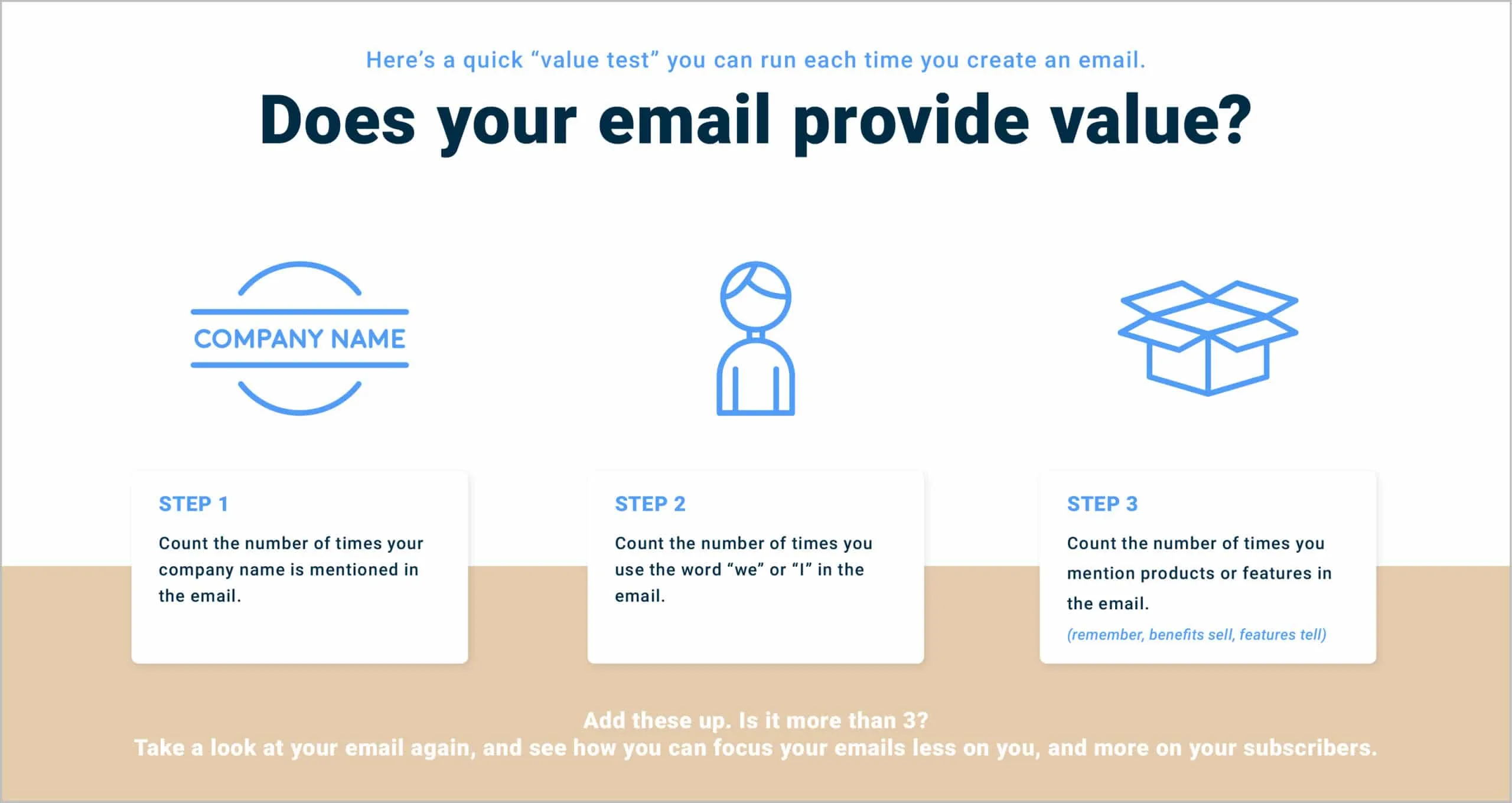
Prioritizing Subscriber Benefit: Every email you send should offer something valuable to your audience, whether it’s insightful information, exclusive deals, or personal enrichment.
- Educational Content: Share tips, guides, and resources that help solve common problems or improve your subscribers' knowledge in a relevant area.
- Exclusive Offers: Give your email subscribers first access to sales, promotions, or new products to make them feel valued and special.
Why It Works:
Builds Loyalty: Providing consistent value fosters a sense of loyalty among your subscribers, as they come to see your emails as beneficial resources rather than just promotional messages.
Drives Engagement: Value-packed emails encourage readers to engage more deeply with your content, leading to higher CTRs. According to a report by HubSpot, emails that offer something of value can increase click-through rates by more than double compared to sales-focused emails.
9. Optimize for Preview Text
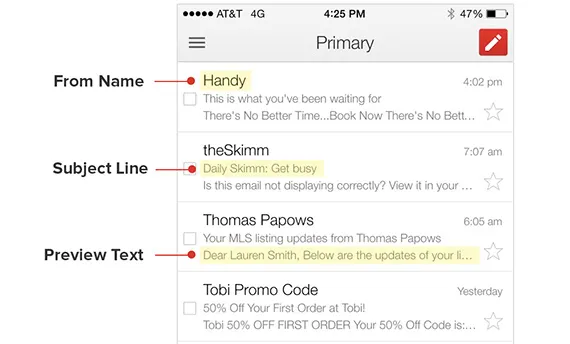
Maximizing the First Impression: The preview text is the snippet of content that appears next to or beneath the subject line in most email clients. It offers an additional opportunity to entice subscribers to open your email.
- Complementary Messaging: Ensure your preview text complements your subject line and provides further insight into the value contained within the email.
- Call to Action: Utilize this space to include a soft and clear call to action or a compelling reason why the reader should open the email.
Why It Works:
Boosts Open Rates: Effective preview text acts as an extension of your subject line, providing additional context or incentive to open the email. This can lead to an increase in open rates, which naturally supports a higher CTR. Litmus research shows that optimizing preview text can increase open rates by up to 45%.
Improves Email Performance: By giving subscribers a clearer expectation of what’s inside, optimized preview text can enhance the overall performance of your email campaigns, encouraging more informed and interested clicks.
10. Adhere to Spam Folder Laws
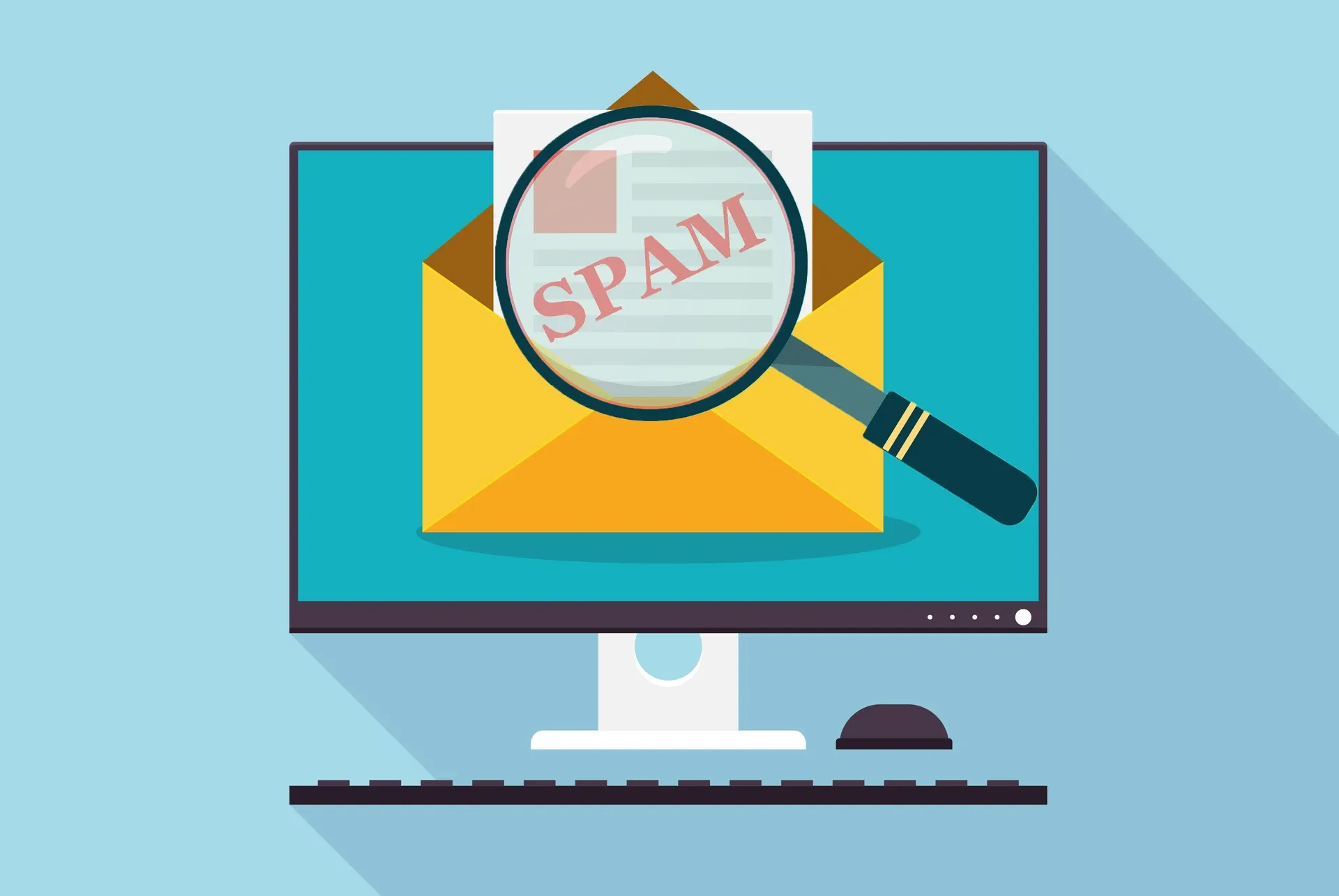
Ensuring Legal Compliance: Adhering to spam folder laws, such as those outlined in the CAN-SPAM Act in the United States, GDPR in Europe, and other regional regulations, is essential for maintaining your sender reputation and ensuring your emails reach the inbox.
- Clear Opt-In Procedures: Make sure your subscribers have explicitly agreed to receive emails from you, providing clear opt-in confirmation.
- Easy Unsubscribe Options: Include an easily accessible unsubscribe link in every email to comply with legal requirements and respect subscriber preferences.
Why It Works:
Avoids Spam Filters: Compliance with spam laws helps your emails avoid being flagged as spam, ensuring they reach your subscribers’ inboxes and thereby increasing the potential for higher CTRs.
Builds Trust: Demonstrating respect for privacy and legal standards builds trust with your audience, which is essential for long-term engagement and brand loyalty.
11. Re-engage Inactive Subscribers
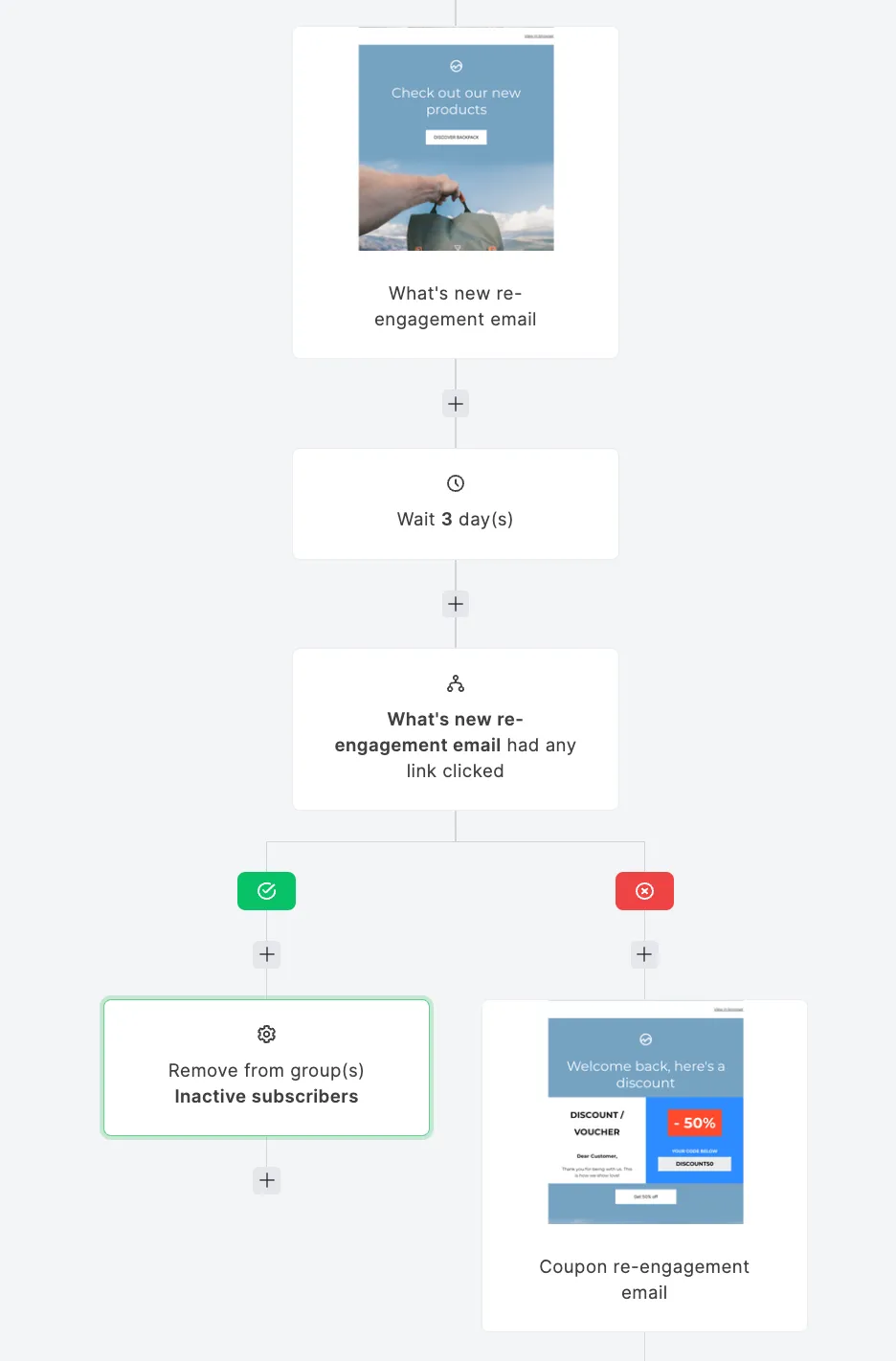
Reviving Subscriber Interest: Over time, even the most engaged subscribers can become inactive. Implementing re-engagement campaigns can awaken their interest and bring them back into the fold.
- Segmentation of Inactive Subscribers: Identify subscribers who haven’t engaged with your emails over a specified period and target them with a dedicated re-engagement campaign.
- Personalized Re-engagement Offers: Use personalized offers, surveys, or messages asking for feedback to remind them of the value your emails provide.
Why It Works:
Boosts Engagement Rates: Successfully re-engaged subscribers can significantly improve your overall engagement rates and CTR, as these individuals have previously shown interest in your content.
Cleans Your Email List: The process helps you identify and remove truly disinterested subscribers, improving your email list's health and deliverability. According to MarketingSherpa, re-engagement campaigns can lead to a 45% open rate, highlighting the potential to recover valuable subscribers.
12. Send Emails at the Right Time

Timing Is Everything: Finding the optimal time to send emails is pivotal for maximizing open rates and, consequently, Click-Through Rates (CTR). The "right time" varies widely depending on your audience's habits, preferences, and time zones.
- Analyze Engagement Patterns: Look into your email analytics to identify when your subscribers are most active. This includes days of the week and specific times of day when your emails receive the highest engagement.
- Consider Audience Demographics: Factors such as the industry you're in, the nature of your content, and the daily routines of your audience segments can influence the best times to send emails.
Why It Works:
Increases Visibility: Sending emails when your audience is most likely to check their inbox boosts the visibility of your messages, reducing the chance of them being overlooked or buried under newer emails.
Enhances Engagement: Subscribers are more inclined to engage with content that arrives at a convenient time, reflecting in higher open and click-through rates. According to Campaign Monitor, emails sent on Thursdays tend to have the highest open rates, while Tuesdays have the highest CTR. However, these trends can vary, underscoring the importance of personalized analysis.
What Other metrics Should you Track to Increase your Email Marketing Campaign
To truly gauge the effectiveness of your email marketing campaigns and to optimize for better performance, focusing solely on the click-through rate (CTR) is not enough.
There are several other critical metrics that provide a comprehensive view of your campaign's health and success. Tracking these metrics can help refine your strategies, leading to higher engagement and conversion rates.
Key Metrics Beyond CTR:
1. Open Rate
- Measures the percentage of recipients who open your email. A higher open rate indicates effective email subject lines and sender reputation.
- Why it matters: It's the first step in engaging your audience; if they're not opening your emails, they're not seeing your content or clicking through.
2. Conversion Rate:
- The percentage of email recipients who completed a desired action, such as making a purchase or signing up for a webinar, after clicking on a link in your email.
- Why it matters: It directly ties your email marketing efforts to your business goals, indicating the ultimate effectiveness of your campaigns in driving revenue or other key objectives.
3. Bounce Rate:
- The rate at which your emails are not delivered to the recipient’s inbox, classified as either soft bounces (temporary issues) or hard bounces (permanent errors).
- Why it matters: High bounce rates can affect your sender reputation and email deliverability, reducing the overall effectiveness of your campaigns.
4. Unsubscribe Rate:
- Tracks the percentage of recipients who opt out of your email list after receiving an email.
- Why it matters: It's a direct indicator of how relevant and valuable your audience finds your content. A high rate may signal the need for better segmentation or content optimization.
5. Engagement Over Time:
- Tracks how engagement with your emails changes based on the time of day or day of the week they are sent.
- Why it matters: This data can inform when to send emails to maximize opens and clicks.
Open Rate vs Conversion Rate vs Click Through Rate
Concluding Thoughts
Improving your email Click-Through Rate (CTR) is crucial for the success of your email marketing campaigns. Key strategies like personalizing emails, segmenting your audience, and using a reliable email marketing service can significantly boost engagement.
It's not just about sending more emails; in fact, sending fewer emails but with more targeted content can lead to better results. Ensuring your emails offer real value, stand out with compelling subject lines, and reach your audience at the right time are essential steps.
Also, remember the importance of keeping your email list clean and engaged by reactivating inactive subscribers and adhering to spam laws. By focusing on these strategies, you can achieve more meaningful interactions through your email campaigns, driving up your CTR and contributing to the overall success of your marketing efforts.





.jpg)

.jpg)
